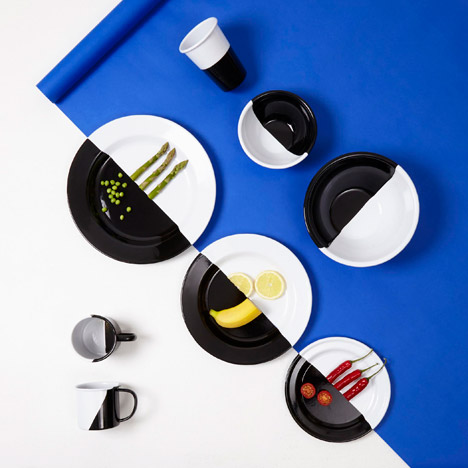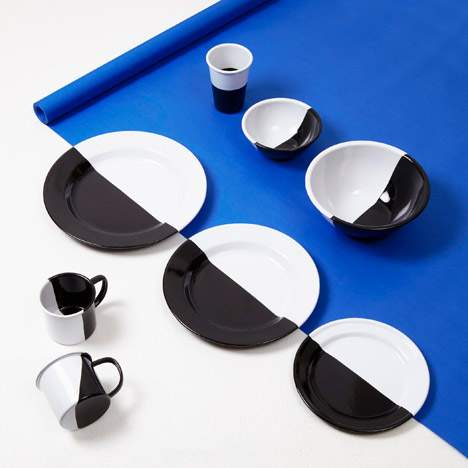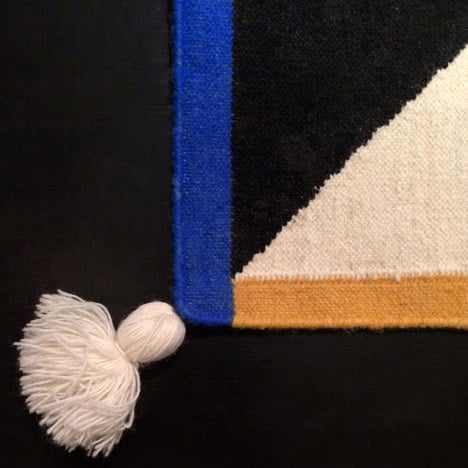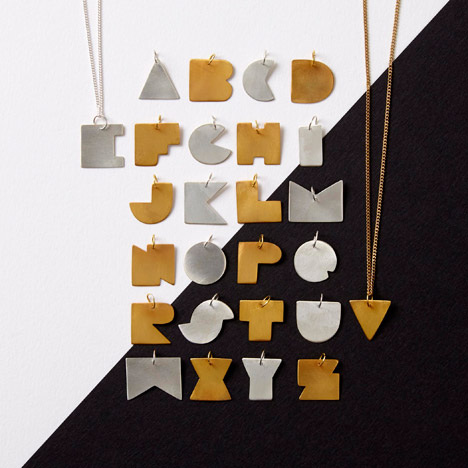Darkroom responds to "soft Postmodernism fluff" with fifth homeware collection
Pomo summer: London design store Darkroom has created a collection of home accessories and jewellery based on five basic shapes to celebrate its fifth anniversary.
Launching during next month's London Design Festival, Darkroom's latest range designed in-house includes jewellery, ceramics, textiles, rugs and candles.
Each of the five designs is based on one of five simple shapes, influenced by the geometric forms and bold colours of African craft that are mirrored in the products from the 1980s Memphis Group – credited with introducing Postmodernism into design.
"The Darkroom aesthetic has always had its roots based on a love of African tribal painting and beadwork," co-founder Rhonda Drakeford told Dezeen. "I've been collecting African wax print fabrics for a long time and there are similarities in the brazen iconography and colour palettes to a lot of the Memphis work."

A resurgence of interest in the Memphis Group was evident during last year's Milan design week, and many designers have since began experimenting with their own take on the style. But Drakeford doesn't think these new iterations remain true to the movement's original principles.
"I've obviously become conscious that the Memphis look is trending and this is difficult for me in a way as I naturally have an urge to turn away from a trend," she said. "There's a great deal of 'soft Postmodernism' fluff out there right now; polite and pretty decorative versions."
For the anniversary collection, Darkroom selected a circle, a triangle, a square, a semi-circle and a ziggurat shape to provide the forms and motifs for the items.
The lambswool blankets were created by a Welsh mill, patterned with graphics in black and white or grey and white. The material is trimmed with a brightly coloured blanket stitch.

Tableware created with San Francisco enamelware brand Crow Canyon is dip-dyed so half of each plate is black while the other side remains white.
Scented with fragrances developed in Paris, the two candles are housed in reusable spun-metal vessels with sculptural Portuguese cork lids.
Darkroom designed its own typeface to create its inaugural jewellery line. It features the 26 letters of the alphabet as a series of silver and gold necklace pendants.

Finally, the brand worked with weavers in Bhadohi, India, on a range of rugs known as kilims. Hand dying was used to produce the geometric patterns across the carpets, which can be used as floor coverings or wall hangings.
One of Darkroom's main influences is the work of artist Nathalie Du Pasquier, whose bold prints created for Memphis have recently seen a revival in fashion and design. American Apparel launched a collaboration with Du Pasquier last year, while Danish brand Hay used her patterned textiles in its 2013 collection.
"Nathalie Du Pasquier first became interested in pattern while living in West Africa in the 1970s and it's this shared love of bold, bright, bonkers pattern that cemented a love for her interpretations," Drakeford added. "I often see details in African artefacts that I recognise from Nathalie's work."
The store also often draws references from the work of Ettore Sottsass, who founded Memphis at the beginning of the 1980s. In 2013, Darkroom held an exhibition called So Sottsass that featured pieces influenced by the work of the Italian designer.

"I first became aware of Ettore Sottsass' work many years ago when I discovered his early ceramic and enamel works from the 1950s," said Drakeford. "I really enjoy mixing textures, such as placing a very roughly hewn ceramic next to a crisply painted piece of metal furniture — I love how a journey through Sottsass' work epitomises this relationship."
Darkroom's store is located on Lamb's Conduit Street in central London, where the collection will launch during the city's annual design festival from 19 to 27 September.
For last year's event, the shop was decorated with grid patterns used in the 1960s and 70s by radical Italian architecture firm Superstudio.